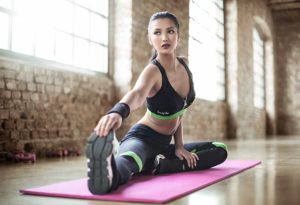 In order to keep your back as healthy as possible, it is important to understand the concept of the core. A common misconception is that the core is simply just your abs.
In order to keep your back as healthy as possible, it is important to understand the concept of the core. A common misconception is that the core is simply just your abs.
However, the truth is, the core is far more encompassing and has a much bigger role in your body than you may realize.
Definition of the Core
The core is a pretty complex system of muscles that wraps your body like a corset, from ribs to hips and belly to back. Simply put, if you remove your arms and legs, what remains is your core. There are actually 29 muscles of the core, all which all work together to help stabilize the body and transfer force between the upper and lower extremities.
Benefits of Core Training
The biggest benefit of core training is to develop functional fitness—the type of fitness that is essential to daily living and regular activities. This translates to the ability to get on and off the floor to play with your dog, stand up from a chair, sit comfortably at work, or vacuum and do yardwork without pain. A strong core also promotes more efficient movement, therefore preventing injury and improving performance.
Support Posture with Balanced Core
From a more granular back perspective, having strong and stable core muscles helps properly support your vertebrae and discs, helping to prevent postural issues, discomfort, injury, and pain. When all the parts of the core work together correctly, you can better hold the position of the ribs and pelvis, maintain optimal diaphragm function, and allow the abdominal muscles to “show up” and do their job.
The stronger our core is, the easier activities like walking, workout out, and doing everyday household tasks becomes easier, more enjoyable, and less risky for the body.
Muscles in the Core
But before you take steps to strengthen your core, you first need to understand where it actually is so you can develop a back health regimen that best suits your current needs. Warning: Experts vary in which muscles they consider to be the core muscles, but the following list includes the most commonly identified core muscles as well as the lesser-known groups:
- Rectus abdominis: the front abdominal muscles that are responsible for the ‘six-pack ab’ look in very fit people.
- Erector spinae & multifidus: muscles in the back that are located between your spine bones and run along your spine.
- The internal and external obliques: the muscles along the side of your torso that are responsible for lateral flexion and rotation.
- Transverse abdominis:the deepest of the abdominal muscles, this muscle wraps around the torso, creating an effect similar to a back support belt.
Your core also includes the diaphragm (the breathing muscle) and the muscles of the pelvic floor (these are basically the muscles in the pelvis that “close”). I also consider the gluteal muscles as core muscles.
So when it comes to your back health, don’t just settle for a six-pack when you can strengthen your entire core! Abdominals often get all the credit for protecting the back, but they are only a small part of the back health equation. Rather than isolating the abs, core strengthening exercises are most effective when the torso works as a solid unit with both front and back muscles contracting at the same time.
You’ve got this, and I’ve got your back (no pun intended)!
Xo,
Christa D.